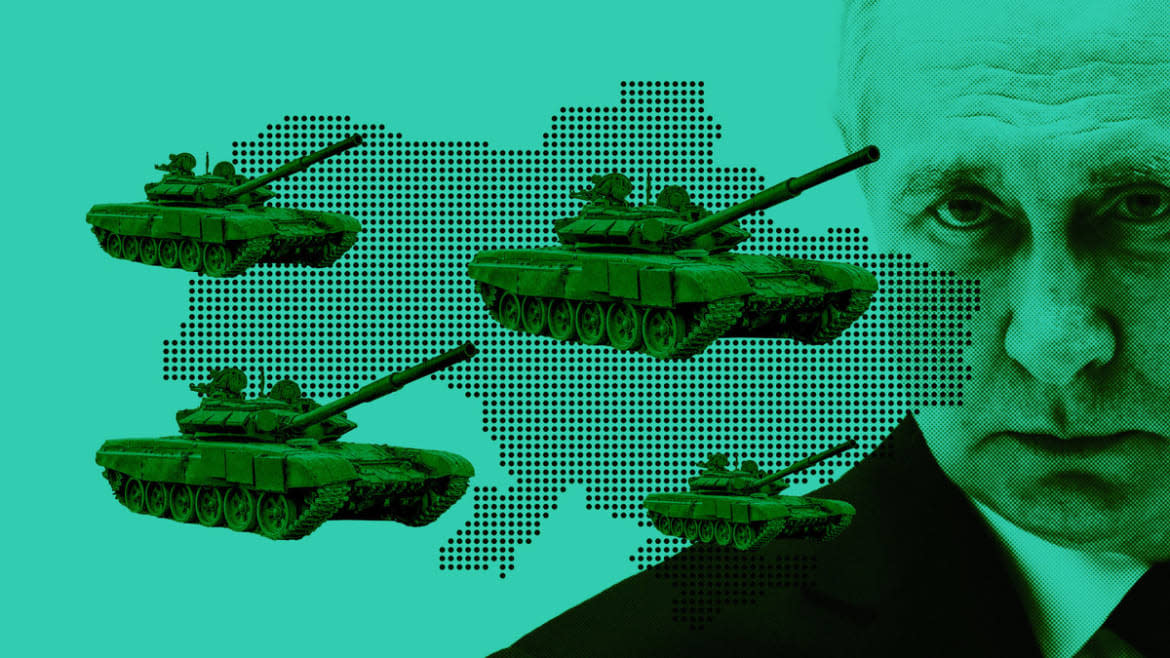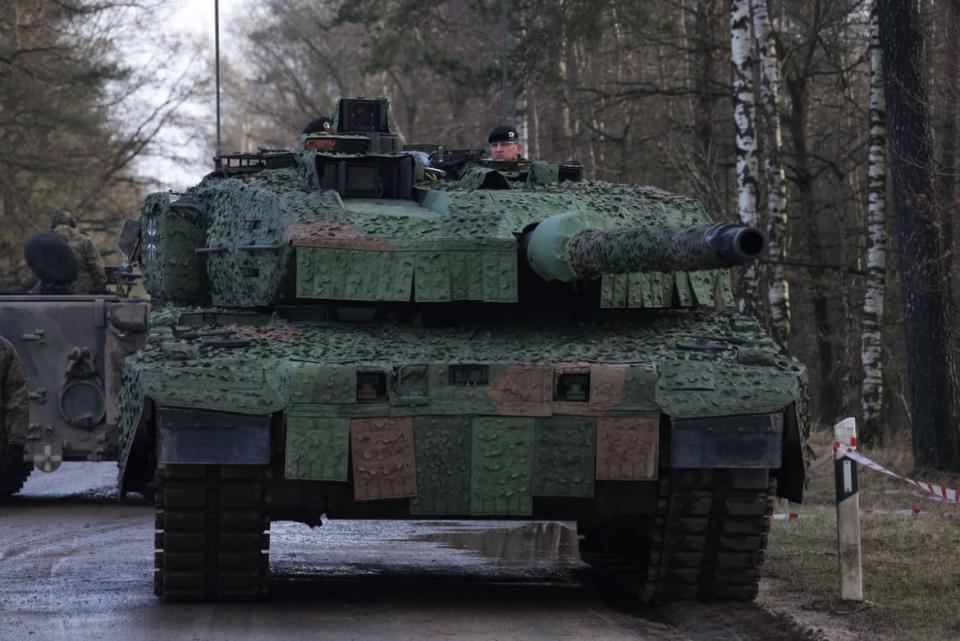Swarm of Tanks Is Just the Start of Putin’s New Nightmare

Western-built tanks are finally on the table for Ukraine—just as the country is preparing to defend against a new Russian offensive expected this year.
Ukraine’s deputy chief of military intelligence, Vadym Skibitsky, said recently that Russia will probably intensify efforts to push into Ukraine in the next few months, especially territory in eastern Ukraine that Kyiv liberated late last year. Ukrainian forces, meanwhile, are aiming to stop Vladimir Putin’s troops in their tracks—and continue rolling his army back to the Russian border.
On Tuesday, the Wall Street Journal reported that the Biden administration was very seriously considering sending Abrams tanks to Ukraine, partially to spur German lawmakers into action. A few hours later, Der Spiegel reported that Germany will now send tanks, too. The news follows a commitment from the U.K. earlier this month to send a small number of its Challenger 2 tanks.
Any modern tanks are superior to Russian tanks on an individual basis, and will surely make a difference on the battlefield. European leaders, however, argue that the German-made Leopard 2 is the best candidate for Ukraine. Unlike American or British tanks, many European and NATO countries operate the Leopard, allowing them to pool their donations. Even countries like Spain, whose fleet of Leopards is in too much disrepair to send, can donate spare parts and ammunition.
Kremlin Threatens ‘Whole New Level’ of War Over Western Weapons
Kyiv is used to operating a mishmash of incompatible military equipment donated from different countries, but trying to operate three or four kinds of tanks concurrently could prove challenging. Each type would need its own supply of mechanics, spare parts, trained crews, and ammunition. That said, Ukrainian crews will happily jump into any vehicle to help them fight Russian forces.
Though German leaders have been worried about being the lone country to send a large number of tanks, the U.S. donation appears to have mitigated Berlin’s concerns, according to Der Spiegel. Germany’s foreign minister said Tuesday that European countries can train Ukrainian crews on how to operate Leopards, signaling that they will probably approve requests from other countries to send the German-made tanks in the coming weeks.

A new Leopard 2 A7V heavy battle tank stands during a visit by Defence Minister Christine Lambrecht to the Bundeswehr Army training grounds on February 07, 2022 in Munster, Germany.
Ukrainian officials claim that they’d get 100 Leopards from 12 European countries if Germany allowed it. Whether or not that’s true, at least two countries are vehemently convinced Kyiv should have their tanks: Finland and Poland. The president of Finland stated on Jan. 12 that Finland could supply some of its 200 Leopards, but it would need other countries to take the lead due to Finland’s long border with Russia.
Poland, which sent Ukraine hundreds of older tanks earlier in the conflict, appears to be foaming at the mouth to send their Leopards. Polish officials claimed on Tuesday that they’re requesting Germany to allow them to send Leopards, but have previously claimed that they’re prepared to do so without German permission, which would be an extraordinary violation of their end-user agreement.
The Epic Arsenal of Western Guns Coming for Putin This Year
Ukraine will definitely benefit from a fleet of modern tanks, but it may take some time. Much like when the U.S. and Europe pledged donations of advanced air defenses, there will be a lag time between announcements that tanks are coming and their debut on the battlefield. Crews will need to be trained, supply chains organized, and potentially new units formed for the Ukrainians to make full use of their new weapons.
Still, a clear trend is emerging in this conflict: Ukraine’s military is getting newer and better equipment, while Russia falls back on weapons built in the 1960s. If things keep moving in that direction, it becomes more and more feasible for Ukraine to blunt Putin’s attacks—and start eyeing up territory it hasn’t controlled since the first Russian invasion in 2014.
Get the Daily Beast's biggest scoops and scandals delivered right to your inbox. Sign up now.
Stay informed and gain unlimited access to the Daily Beast's unmatched reporting. Subscribe now.

 Yahoo News
Yahoo News 
